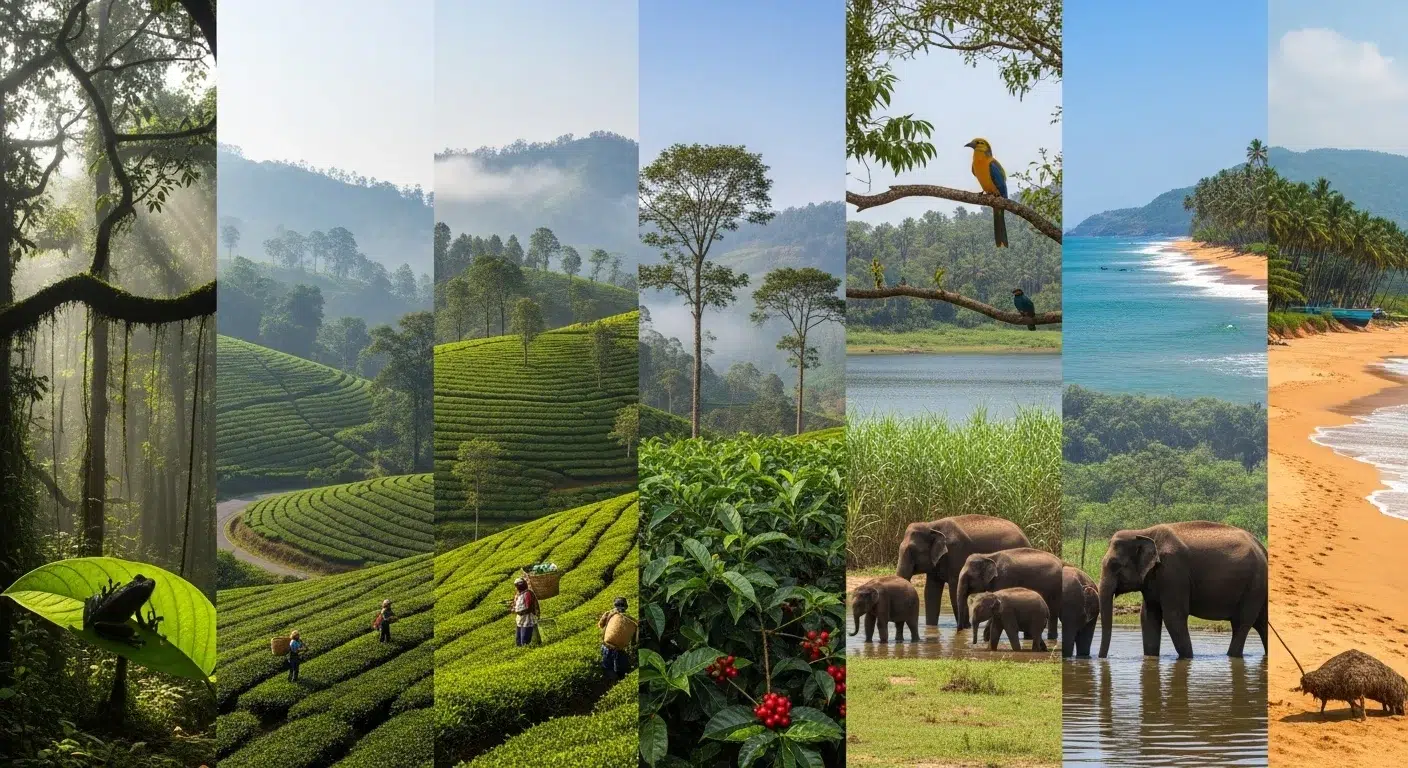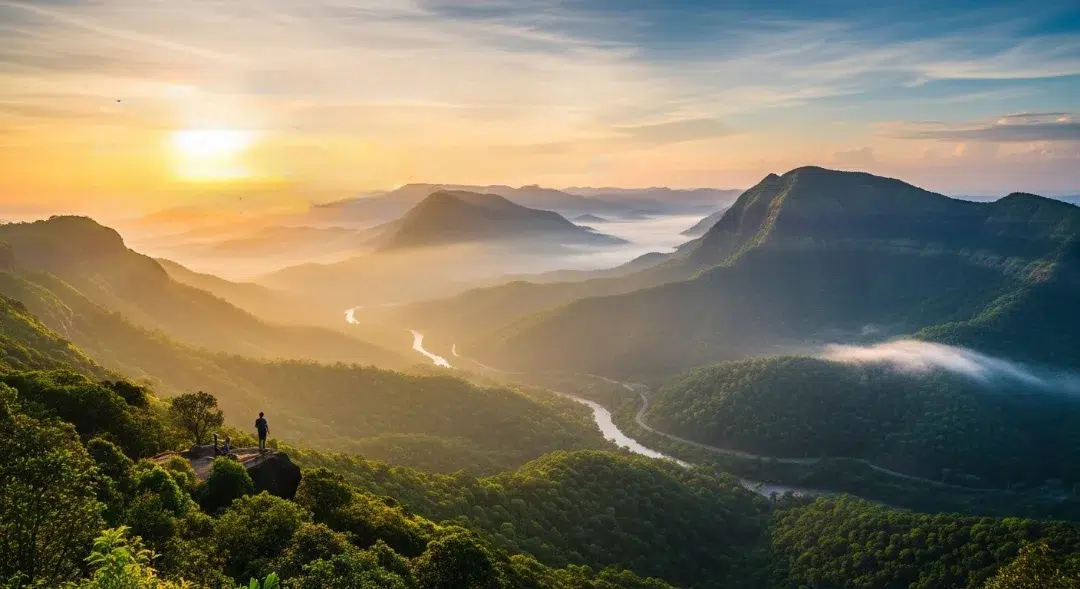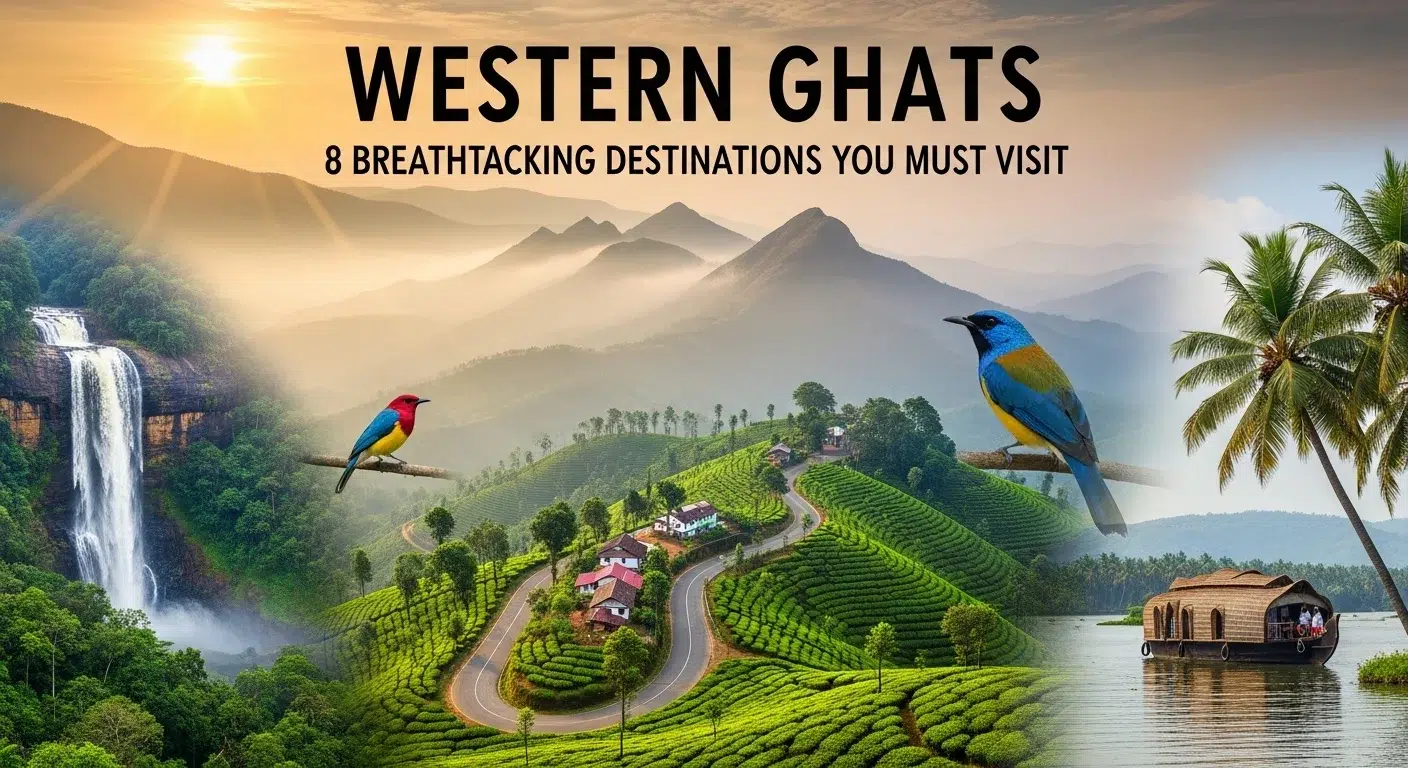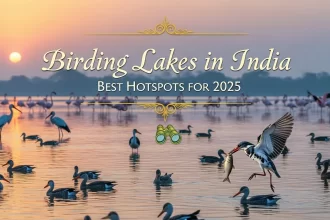Introduction: Discovering the Western Ghats
- A Living Tapestry: Begin with a vivid description of the Western Ghats a UNESCO World Heritage site and one of the world’s “hottest hotspots” of biological diversity. Emphasize its age (older than the Himalayas), its role in shaping India’s climate, and its breathtaking landscapes.
- Your Ultimate Guide: State the purpose of the article: to be a comprehensive, human-written travel guide that showcases 8 must-visit destinations for an unforgettable trip, offering a blend of adventure, tranquility, and cultural immersion.
- Navigating the Nuances: Briefly address the current travel context, mentioning the importance of responsible tourism and staying informed about local conditions, particularly in light of recent conservation debates and a greater focus on sustainable practices.
Preparing for Your Western Ghats Adventure
- Best Time to Visit: Detail the post-monsoon season (October to February) as the ideal time for pleasant weather and clear views, while also providing tips for those who prefer the lush, misty landscapes of the monsoon season (June to September) with a caveat about potential travel disruptions.
- Sustainable Travel Practices: Incorporate information about ecotourism, supporting local communities, and the importance of leaving no trace. Mention recent conservation efforts and the debate around Ecologically Sensitive Areas (ESAs) to demonstrate authoritativeness.
- Essential Gear: Offer practical packing tips, including clothing for varying temperatures, comfortable trekking shoes, and a waterproof layer.
The 8 Breathtaking Destinations
1. Munnar, Kerala: The Tea Garden Paradise
Munnar rises at the confluence of three mountain streams and served as a summer retreat for the British. It is defined by its sprawling tea plantations, misty mountains, and serene atmosphere. This region is a part of the Western Ghats’ most biodiverse areas and is famous for the rare Neelakurinji flowers, which carpet the hills in blue once every twelve years.
- Key Attractions: Eravikulam National Park (home to the endangered Nilgiri Tahr), Anamudi Peak (South India’s highest peak), Mattupetty Dam, and Top Station for panoramic views.
- Activities: Tea factory tours, nature walks, trekking, and boating.
- Vibe: Tranquil, refreshing, and perfect for a peaceful retreat.
2. Coorg (Kodagu), Karnataka: The Scotland of India
Nestled among misty, mountainous terrain, Coorg is a region famous for its fragrant coffee and spice plantations. It offers a perfect blend of adventure and relaxation, with a rich local culture and stunning natural beauty. The region is dotted with waterfalls and offers numerous trekking opportunities.
- Key Attractions: Abbey Falls, Raja’s Seat (a scenic viewpoint), Dubare Elephant Camp, and various coffee estates.
- Activities: Coffee plantation tours, trekking (Tadiandamol Peak), and waterfall rappelling.
- Vibe: Adventurous, hospitable, and rich with the aroma of coffee.

3. Ooty, Tamil Nadu: The Queen of Hill Stations
A classic hill station, Ooty is known for its colonial charm, lush botanical gardens, and the nostalgic Nilgiri Mountain Railway. It offers a peaceful and family-friendly escape from the heat of the plains. The town is surrounded by dense pine forests and rolling tea gardens, making it a perfect spot for leisurely strolls and scenic drives.
- Key Attractions: Nilgiri Mountain Railway (a UNESCO World Heritage Site), Ooty Botanical Gardens, and Doddabetta Peak.
- Activities: A scenic toy train ride, boating on Ooty Lake, and visiting tea factories.
- Vibe: Nostalgic, charming, and family-friendly.
4. Mahabaleshwar, Maharashtra: The Strawberry Hub
A popular getaway famous for its dramatic viewpoints, abundant strawberry farms, and vibrant atmosphere. This hill station is particularly famous for producing around 85% of India’s strawberries, making it a favorite for foodies and nature lovers alike. It offers breathtaking views of the surrounding valleys and forts.
- Key Attractions: Arthur’s Seat (a viewpoint), Pratapgad Fort, and Mapro Garden (a popular spot for all things strawberry).
- Activities: Strawberry picking, boating on Venna Lake, and horse riding.
- Vibe: Lively, scenic, and a culinary delight.
5. Wayanad, Kerala: The Explorer’s Dream
Wayanad is an adventurous destination with ancient caves, dense forests, and challenging trekking trails, ideal for those seeking an immersive nature experience. The region is part of the Nilgiri Biosphere Reserve and is home to a rich variety of flora and fauna. Its landscape is marked by misty mountains, verdant valleys, and impressive waterfalls.
- Key Attractions: Chembra Peak (with a heart-shaped lake), Edakkal Caves with ancient petroglyphs, and Wayanad Wildlife Sanctuary.
- Activities: Trekking, bamboo rafting, and wildlife spotting.
- Vibe: Adventurous, historically rich, and a haven for nature lovers.

6. Chikmagalur, Karnataka: The Coffee Trail
Widely considered the birthplace of coffee in India, Chikmagalur offers serene coffee estates, picturesque waterfalls, and some of the highest peaks in Karnataka. It provides a peaceful, off-the-beaten-path experience and is a true paradise for coffee connoisseurs, offering tours from bean to cup. The region’s beauty is at its peak during the winter, which is ideal for trekking.
- Key Attractions: Mullayanagiri Peak, Hebbe Falls, and Kudremukh National Park.
- Activities: Trekking to Mullayanagiri and exploring coffee plantations.
- Vibe: Peaceful, off-the-beaten-path, and a true paradise for coffee connoisseurs.
7. Lonavala & Khandala, Maharashtra: The Monsoon Getaway
These twin hill stations are the perfect weekend escape, known for their breathtaking monsoon vistas and the local delicacy, ‘chikki.’ Located just a short drive from Mumbai and Pune, they offer a quick and accessible retreat. The misty hills and cascading waterfalls during the monsoon season create a truly magical atmosphere.
- Key Attractions: Tiger Point, Bhushi Dam, and the historic Karla Caves.
- Activities: Scenic drives, waterfall visits, and trekking to Lohagad Fort.
- Vibe: Accessible, bustling during the monsoon, and ideal for a quick trip.
8. Thekkady, Kerala: The Wildlife Haven
Thekkady is a premier wildlife destination, home to the Periyar Tiger Reserve, one of India’s most well-managed protected areas. The reserve is centered around the Periyar Lake and offers a unique opportunity to spot wildlife like elephants, gaurs, and a variety of birds and other species from the safety of a boat. The area is also famous for its aromatic spice plantations.
- Key Attractions: Periyar National Park and numerous spice plantations.
- Activities: Bamboo rafting, jungle safaris for tiger and elephant spotting, and spice plantation tours.
- Vibe: Wild, untamed, and focused on conservation.
Conclusion: Plan Your Unforgettable Journey
- Recap: The Western Ghats offer an incredible spectrum of experiences, from Munnar’s tranquil tea gardens to Thekkady’s untamed jungles. Each destination presents a unique landscape, a different set of activities, and a distinct cultural vibe.
- Closing Message: Whether you seek a peaceful retreat, an adventurous trek, or a deep dive into nature, the Western Ghats have a perfect destination waiting for you. It’s time to pack your bags and embark on a journey that promises to be a feast for all your senses.
Must Read: Top 5 Best Places to Visit in India for Holidays | Unique Travel Ideas & Vacation Spots
FAQs (Frequently Asked Questions)
Q1. Why are the Western Ghats famous?
Ans: The Western Ghats are a UNESCO World Heritage Site, known for their biodiversity, ancient history, and breathtaking landscapes.
Q2. What is the best time to visit the Western Ghats?
Ans: October to March offers pleasant weather, while July to September is perfect for experiencing lush greenery and waterfalls.
Q3. Are the Western Ghats good for trekking?
Ans: Yes, the Western Ghats have numerous trekking routes ranging from beginner-friendly trails to challenging peaks like Agasthyakoodam.
Q4. Which wildlife can be seen in the Western Ghats?
Ans: Elephants, tigers, leopards, gaur, hornbills, and numerous endemic species of birds and plants.
Q5. How can I reach the Western Ghats?
Ans: The Western Ghats stretch across multiple states and are easily accessible via major cities like Bangalore, Kochi, Goa, and Pune.
Thank you for trusting Outdoorkeeda as your guide for your travel needs.







